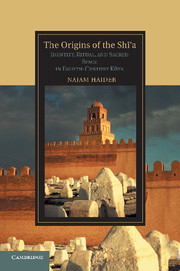Book contents
- Frontmatter
- Contents
- Maps and Tables
- Acknowledgments
- Note on Transliteration and Dates
- Abbreviations
- Map I The Middle East in the early Muslim period
- Part one Narratives And Methods
- Part two Case Studies
- 3 In the Name of God
- 4 Curses and Invocations
- 5 Drinking Matters
- Part three The Emergence of Shī’ism
- 9 Conclusion
- Bibliography
- Index
- References
4 - Curses and Invocations
The Qunūt in the Ritual Prayer
from Part two - Case Studies
Published online by Cambridge University Press: 07 October 2011
- Frontmatter
- Contents
- Maps and Tables
- Acknowledgments
- Note on Transliteration and Dates
- Abbreviations
- Map I The Middle East in the early Muslim period
- Part one Narratives And Methods
- Part two Case Studies
- 3 In the Name of God
- 4 Curses and Invocations
- 5 Drinking Matters
- Part three The Emergence of Shī’ism
- 9 Conclusion
- Bibliography
- Index
- References
Summary
At a number of points in the course of his life, the sources depict the Prophet as both offering prayers for individuals/tribes by name and cursing them for perceived betrayals or transgressions. In many cases, these invocations/curses were integrated into the daily prayer at a point between the Qur’ānic recitation and the sajda (prostration) in a gesture referred to as the qunūt. This much is known and accepted by each of the Islamic law schools under consideration. The problem arises in determining whether the Prophet’s actions were meant as an example for future generations or whether they were restricted to a particular historical moment. As with the basmala, the issue is tied to the very integrity of the prayer that serves as a cornerstone of Muslim ritual life.
This chapter centers on the qunūt, which is defined as either an invocation to God (often on behalf of a group of people) or a curse against an enemy recited in the course of the ritual prayer. Specifically, it focuses on the performance of the qunūt in the five mandatory daily prayers and the witr prayer (performed between ‘ishā’ and fajr). Two notable absences in this discussion are the Friday prayer, and the group/congregational prayer, both of which are governed by idiosyncratic legal rules. The logic behind the inclusion of witr, but not of the other supererogatory prayers, lies in the controversy surrounding its status and its absolute centrality in juristic discussions of the qunūt.
- Type
- Chapter
- Information
- The Origins of the Shi'aIdentity, Ritual, and Sacred Space in Eighth-Century Kūfa, pp. 95 - 137Publisher: Cambridge University PressPrint publication year: 2011
References
- 1
- Cited by

